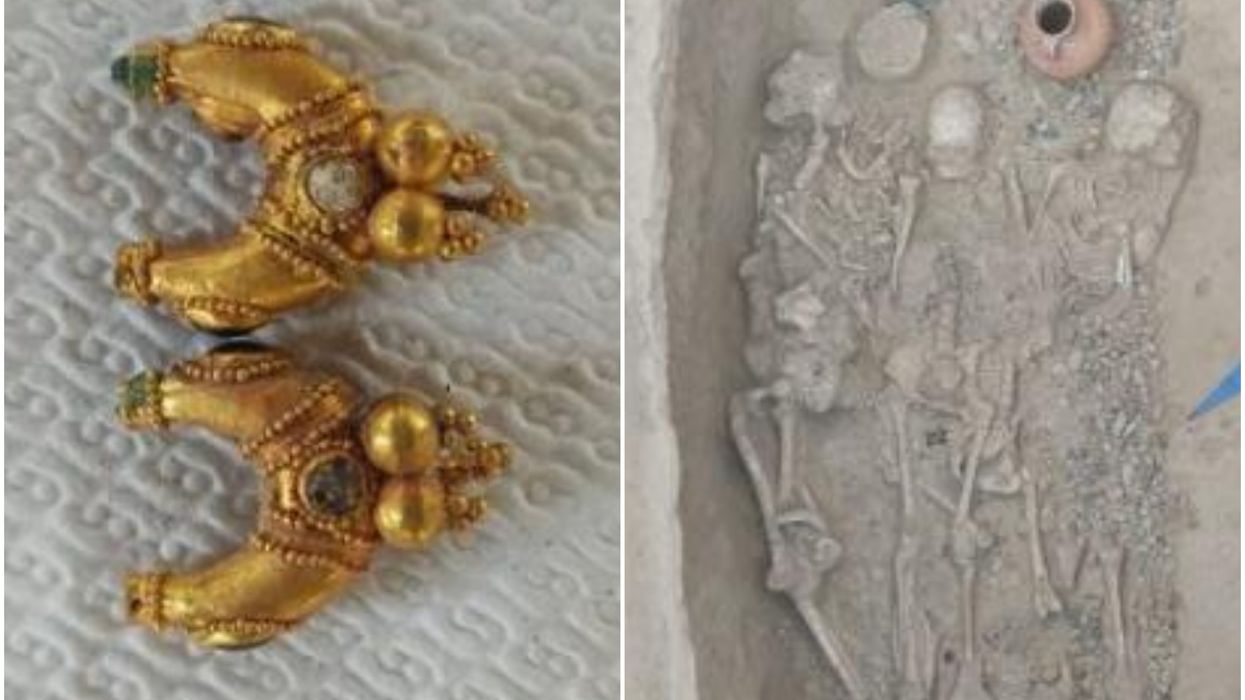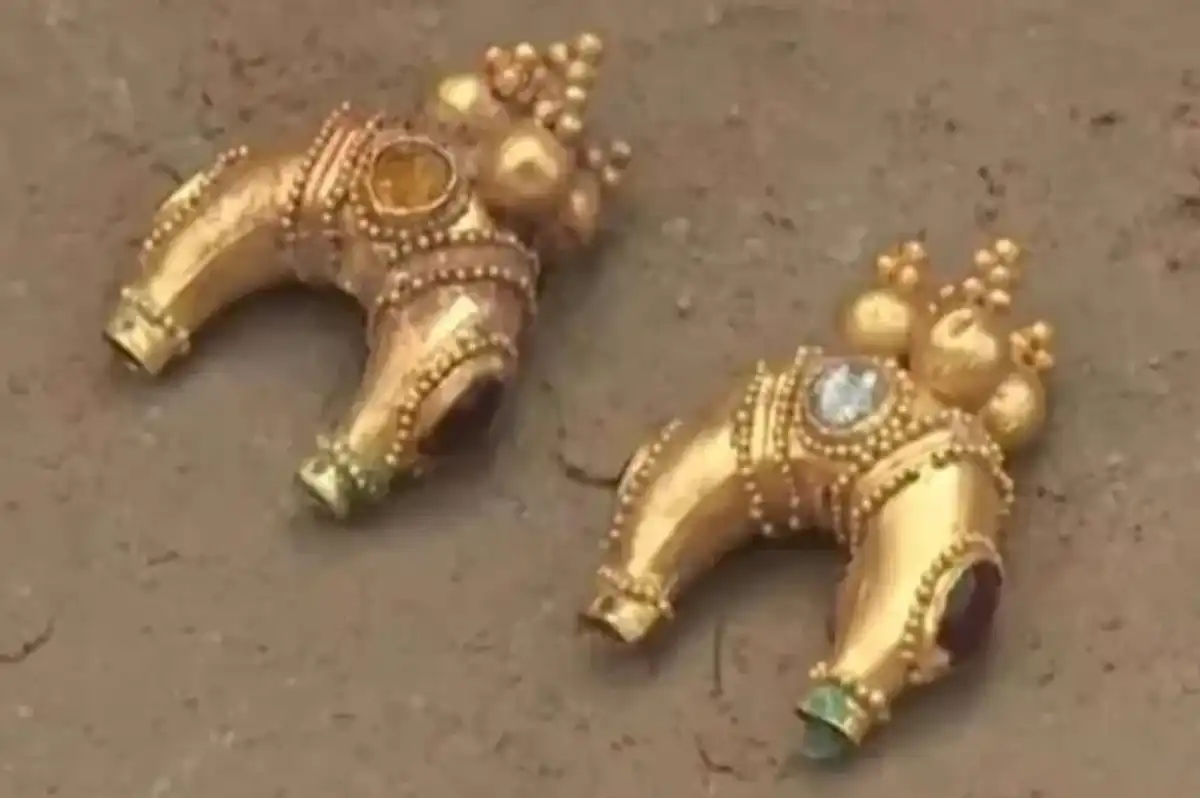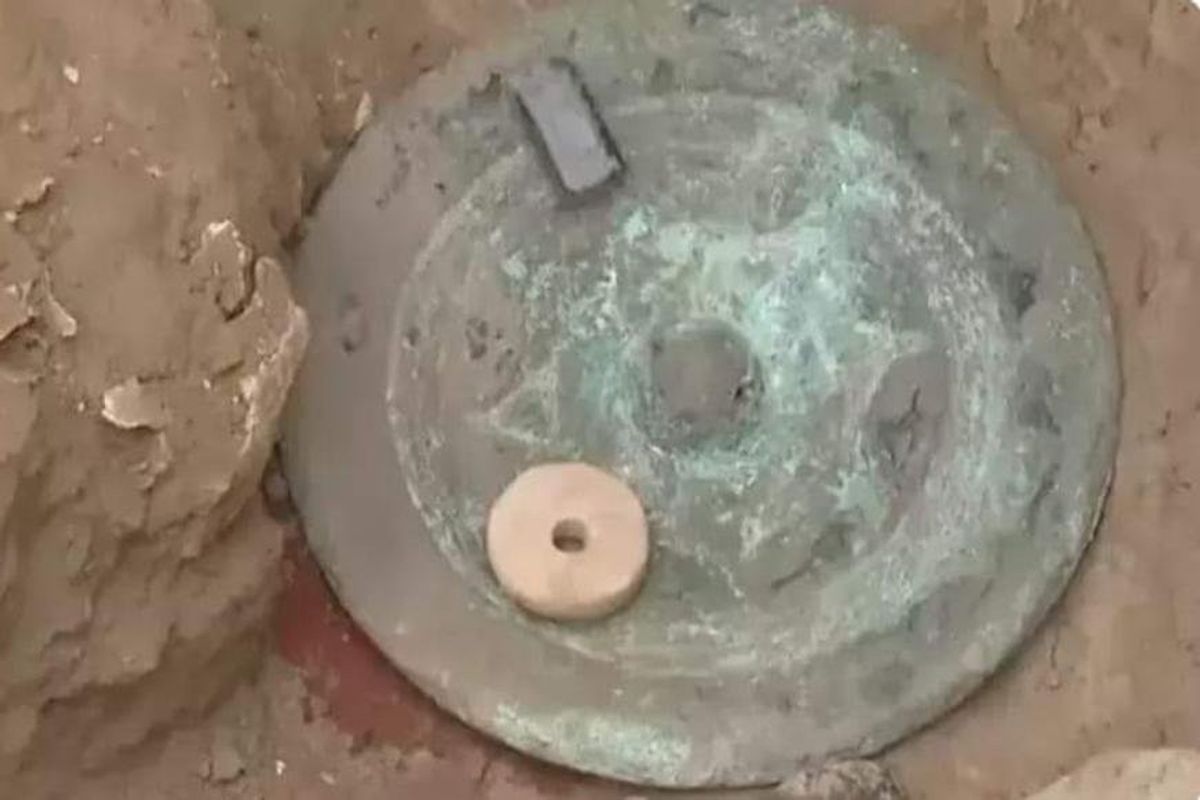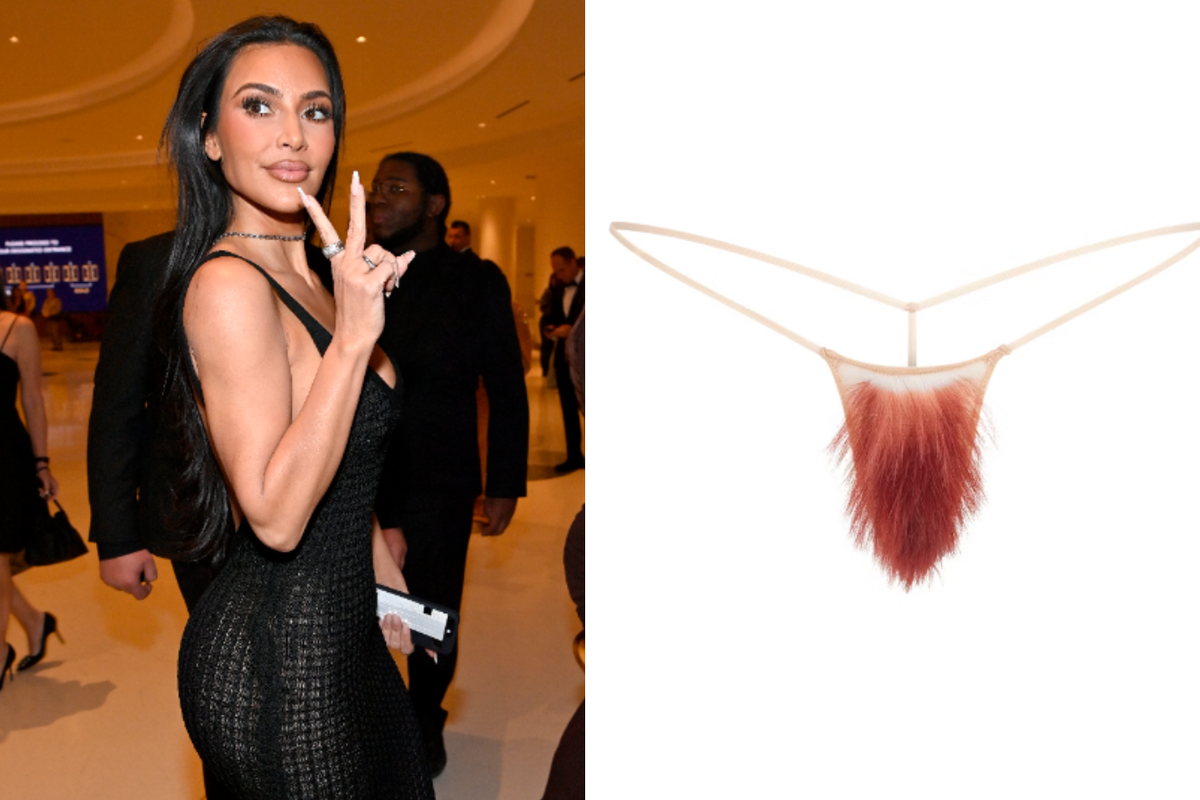Science & Tech
Harriet Brewis
Jun 03, 2024

Bejewelled gold earrings were among the extraordinary finds at a burial site in Kazakhstan
(Zhanibekov University)
Gold jewellery, arrowheads and a bronze mirror dating back 2,000 years have been unearthed in southern Kazakhstan.
Experts believe the bulk of the stunning treasure was made at the time of the Kangju state – a little-known political entity that ruled the region between the fifth century BC and the fourth century AD.
A team from Kazakhstan's Ozbekali Zhanibekov University and local government archaeologists discovered the glittering haul in a burial mound in Turkistan's Ordabasinsky district.
According to a translated statement, they confirmed that two other mounds on the same site had been looted in ancient times. Luckily for them, however, the thieves had missed the third mound, which contained the extraordinary relics.
The most striking of the finds were a pair of ornate, crescent-shaped gold earrings, inlaid with turquoise and rubies, which are thought to date from the first century BC.

Their shape is understood to be a nod to the power of the moon, while their lower decorations, which represented clusters of grapes, were designed to reflect sunlight, Live Science notes.
Meanwhile, the style of the bronze mirror – circular, with an eight-sided arched design on the back and a hole in the centre for thread – indicates that it originated from China during the iconic Han dynasty, which ruled from 206 BC until AD 220.
Such items were highly prized throughout Eurasia – with similar mirrors uncovered in Afghanistan and the southern Ural region. According to the statement, they were buried alongside wealthy women as a sign that she had been influential.

Other items in the bounty include a Roman-style brooch called a fibula; large and small beads; a pottery jug; a shoe; a belt buckle; an arrowhead for hunting birds.
The finds are evidence of the sophisticated craftsmanship that emerged from the mysterious Kangju state, which traded with ancient Rome, ancient China, and the Kushan Empire further south.
The Kangju state was made up of a federation of different peoples, including, at times, nomadic groups of Sarmatians, Xiongnu, and Saki, according to archaeologist Aleksandr Podushkin, who led the study.
The location of the state, across parts of the Great Silk Roads between China and the Mediterranean, endowed it with diplomatic and trade connections throughout the ancient world, Podushkin added in the same statement.
The artefacts will now go on display in the National Museum of the Republic of Kazakhstan in the city of Astana, he confirmed.
Sign up for our free Indy100 weekly newsletter
How to join the indy100's free WhatsApp channel
Have your say in our news democracy. Click the upvote icon at the top of the page to help raise this article through the indy100 rankings
Top 100
The Conversation (0)













Italian Prime Minister can't get away from Trump quick enough